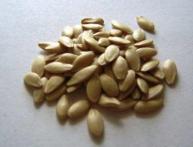Chemical composition, nutritional value and beneficial properties of sweet pepper

Sweet peppers are vegetables; they can be called vegetable peppers or capsicums. This is a plant from the Solanaceae family. Spicy pepper, which is usually seen in the form of peas or ground into powder, belongs to the Pepper family. Sometimes sweet pepper They call it Bulgarian, apparently due to the fact that after the Europeans brought the plant from America, the Bulgarians fell in love with this plant for the pleasant taste and beneficial properties of sweet pepper.
Content:
- Vitamins and minerals in sweet peppers, their nutritional value
- Beneficial chemical compounds in sweet peppers
- Benefits of sweet pepper, contraindications
Vitamins and minerals in sweet peppers, their nutritional value
The concept of sweet peppers includes varieties of vegetable peppers, which include salad peppers and thick vegetable peppers. The fruits of these plants, from a botanical point of view, are false berries, hollow inside. The shape and color of sweet peppers can be very different; there are thin-walled and thick-walled varieties, with fruits:
- elongated
- rounded
- cone-shaped,
- cylindrical
The main color of fully ripe peppers can be:
- green
- yellow
- red
Although now there are already purple, orange, and white peppers. But in terms of the content of vitamins, minerals, and nutritional value, sweet peppers are very similar, although there may be slight differences in the amount of certain substances depending on the variety, color and place of cultivation. Sweet pepper fruits contain the following vitamins:
- RR
- group B 1, 2, 6, 9
- TO
- E
- WITH

It should be noted that in terms of the amount of vitamin C, peppers are superior to many fruits and berries. And although they contain less of this vitamin than rose hips, they contain about 4 times more than lemons, and among vegetables they are the absolute leader in vitamin C. Peppers are also rich in minerals. They contain micro- and macroelements:
- iron
- iodine
- zinc
- chromium
- potassium
- magnesium
- phosphorus
- sodium
The nutritional value of 100 grams of pepper is 26 kcal. Contains:
- proteins, about 1.6 g
- fats, mainly in seeds, 0.1 g
- ash 0.6
- dietary fiber about 2 g
Thus, carbohydrates account for about 20 kcal. Proteins contain both nonessential and essential amino acids, although in their composition they lack only two essential amino acids, such as arginine and phenylalanine. sweet pepper are not considered full-fledged. In addition to the substances listed, peppers also contain complex chemical compounds.
Beneficial chemical compounds in sweet peppers
Although there is not much fundamental difference in the chemical composition of different colored peppers, it still exists. Bright red peppers are the leader in the content of a chemical compound called lycopene. It is responsible for the red, orange and yellow color of the fruit. Lycopene is not produced by the human body; it can only be obtained through food.
This substance slows down oxidative processes and protects the body from cancer cells.Green pepper is the leader among bell peppers in terms of the content of p-coumaric and chlorogenic acids. These substances have antiviral activity, including acting on the herpes virus. Slows down the growth of pathogenic microorganisms such as Staphylococcus aureus.
Green bell peppers contain the chemical phytosterol, which can cleanse the body of bad cholesterol. Phytosterenes also have anti-cancer activity. Like any food product, bell peppers can be recommended in some cases and should be avoided in others.
Benefits of sweet pepper, contraindications

Given the low calorie content and high content vitamins, other useful substances, sweet peppers can be included in many low-calorie nutrition systems, both fresh and after short-term heat treatment. Sweet peppers should be present in the diet of people suffering from:
- anemia
- vitamin deficiency
- metabolic disorders
- immunodeficiency states
- cardiovascular disorders
- oncology
It should be said that high anti-cancer activity makes sweet peppers useful for both women and men, as they can alleviate breast and prostate cancer. Sweet peppers have anti-sclerotic properties; they not only cleanse blood vessels from plaques of “bad” cholesterol, but also make the walls of small blood vessels more elastic.
Eating fresh sweet peppers can be considered an excellent prevention of strokes and heart attacks. Eating sweet peppers will help diabetic patients avoid a sharp increase in blood glucose levels. During the season, peppers should be eaten either fresh or after short-term cooking.
For homemade preparations, it is recommended to freeze sweet peppers for future use; this will lead to the least loss of beneficial properties. No matter how beneficial sweet peppers are, there are some diseases for which they should not be consumed.
First of all, it is gastritis, gastric and duodenal ulcers during the period of exacerbation. This is due to the fact that in addition to containing their own acids, sweet peppers cause increased secretion of gastric juice, which aggravates the course of illnesses and prevents the healing of ulcers. Patients with hypertension, acute renal failure and those suffering from increased nervous excitability should use sweet peppers with caution.
Video on how to grow sweet peppers:











Comments
I love peppers very much, both red and yellow and even green. They say it contains a lot of vitamin C. This means it is beneficial for the body. Therefore, I advise everyone to use it in their food and more))